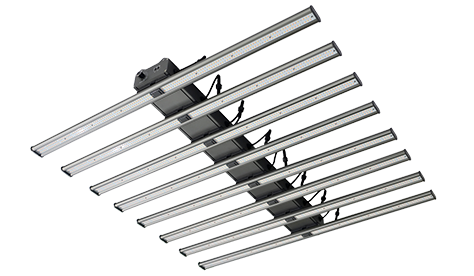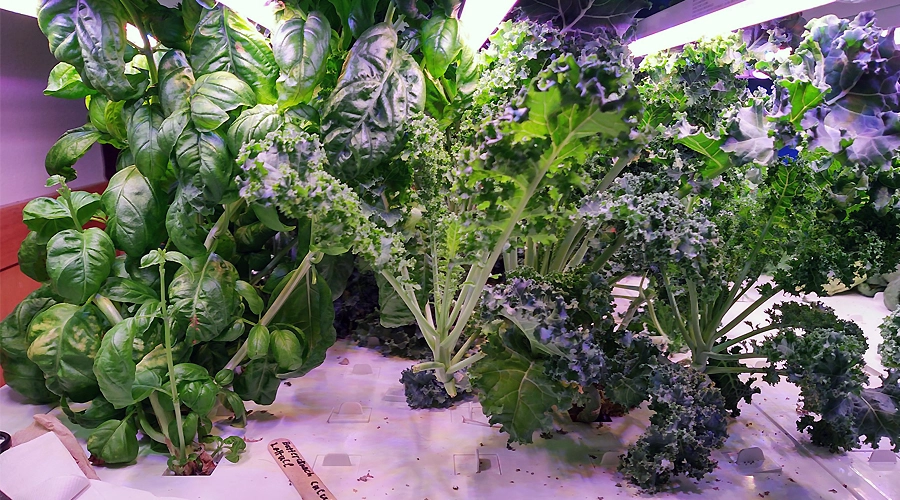栽培者はNFTテクノロジー、DWC水耕栽培システム、またはエアロポニックシステムを使用するかどうかにかかわらず、水耕栽培システムを設定したら、それを大切にする必要があります。
水耕システムのメンテナンスは気が遠くなるように思えるかもしれませんが、心配しないでください。ファンダメンタルズをよく把握している場合、他のすべてのことがはるかに簡単になります。
ここでは、システムを清潔に保ち、植物を含めることができるように、監視に必要な農業が必要なものを探ります。
記録する必要があるもの
- pHレベル
- ECリーディング
- 水の変化
- 水質
- 照明と光周期
- 温度
- 酸素レベル
- 栄養の追加
- 病気と害虫の監視
- 定期的なシステムクリーニング
それはたくさんのように思えるかもしれませんが、それは思ったよりも簡単です。水耕システムの監視と維持中に実行する各タスクのログを保持することが最善です。
pHとECを監視します
最初に議論するのは、pH値とECの測定値です。
植物の成長に不可欠な栄養素の正しいバランスを確保するために、特にシステムが新しい場合は、栄養溶液を頻繁に監視することが重要です。 pHレベルを監視して、栄養吸収のための最適な範囲を維持します。
栄養溶液のECを測定して、その全体的な栄養濃度を決定し、植物の成長段階に基づいてECレベルを調整します。
で DWC システム、通常、かなりの量の水が使用され、NFTシステムと比較して、水温、pHレベル、肥料強度、全体的な栄養濃度などの要因は、時間の経過とともに比較的安定したままになる傾向があります。
DWCでは、これらのパラメーターは1時間ごとに大きな変更を受けません。毎日微妙なバリエーションがあり、毎週より多くの変化があるかもしれません。 NFTシステムと同じように、継続的または一定の調整を頻繁に監視する必要はありません。
最初は、栄養溶液を少なくとも1回または複数回テストします。システムが成熟すると、より良い感覚が得られ、テスト頻度を減らすことができます。
毎日または2〜3日ごとに、肥料の強度を毎週またはpH値を調整するなど、DWCシステムでアクションを実行する場合、NFTシステムで必要な継続的な監視と比較して、より管理しやすいタスクです。
時には、NFTシステムの栄養管理には毎日のpH管理が必要です。監視は、深海ゾーンシステムであろうとNFTシステムであろうと、成長の初期段階で特に重要です。
栄養素や蒸発水が蒸発した栄養素や蒸発水がECとpHの値により顕著に影響する可能性があるため、小型の水耕系システムにはより頻繁なテストが必要になります。
栽培者はその成長を回復することは決してないので、苗は良いスタートを必要とします。貧弱な苗木から始めることは、栽培者が収穫を目指す最適な植物を決して達成しないことを意味します。
システムに水を追加します
システムに水を追加するときは、丸太に追加された水量を記録します。
水耕栽培には2種類の水の変化があることを知る必要があります。最初のタイプは部分的な水の変化であり、続いてより大きな水の変化が続き、これらの変化ははるかに少ないです。
植物が栄養溶液を吸収すると、貯水池の水位がわずかに減少することに気付くでしょう。さらに、一部の水は栄養溶液から蒸発し、水位の低下に寄与します。そのため、貯水池を毎日チェックすることが重要です。
水位が低下する速度は、システムのサイズ、成長室の環境温度と湿度、貯水池が覆われているかどうか、さらには植物の成長サイクルに基づいて異なります。
水位の低下を観察するたびに、水を追加して “トップオフ” 貯水池。それを埋めるだけではありません。正確にどれだけ入れているかを測定する必要があります。
水質を維持します
DWCシステムは通常、NFTシステムほど複雑な水処理システムを必要としません。
栽培者は決して病原体を排除することはできません。代わりに、栽培者が定期的に水を汲み上げ、貯水池全体を消毒し、栄養溶液と移植を再導入することがより一般的です。
また、水耕系を使用して栽培者が藻類の問題に遭遇することが多いことに注意することも重要です。藻類は、軽く、湿気があり、栄養源がある限り、自然に成長し、繁栄します。
水の表面に到達するのをブロックすると、藻類の形成を防ぐのに役立ちます。日光が貯水池の覆われていない表面に当たると、藻類は栄養素の源を見つけます。これは、栽培者が従来の肥料を使用するか有機肥料を使用するかに関係なく発生します。
チャネルがカバーされていない場合、NFTシステムは藻類の成長も経験する可能性があります。そのような場合、水質とコントロール藻類を維持するには、栽培者による定期的な清掃が必要です。
水温と酸素レベルの監視
レタスと緑豊かなグリーンが暖かい気候で栽培されると、それらを灌漑するために使用される水の温度が懸念になる可能性があります。
最適な水温は約68ºFであるため、気温が上昇しても、レタスのボルトティングを遅らせ、病原体のリスクを軽減するのに役立ちます。
DWCシステムと比較して、NFTシステムでは水が速く熱くなります。 NFTチャネルには断熱性がなく、その大きな水コンタクト表面積は温度上昇を速くします。これは、周囲温度が高い温室で特に顕著です。
同じ貯水池の水を継続的に再利用する栽培者は、温度と溶解した酸素が最適なレベルにある場合、通常、根疾患の問題に遭遇しないことがよくあります。
水中で有益な微生物群集を確立することは、根疾患を自然に抑制します。
栽培者はまた、植物の根と有益な微生物の正の成長をサポートするために、飽和に近い水中の溶存酸素レベルを維持する必要があります(室温で約8部あたりO2)。
栽培者は、空気または純粋な酸素を水に導入できます。同様に重要なのは、貯水池の水を循環させ、温度、pH、栄養素、酸素の一貫した勾配を確保することです。
コーネル大学の管理された環境農業チームは、1,500平方フィートの池で、池の多様体を介して水を再循環して分布させると、植物性能が優れていることがわかりました。ポンプ容量は、12時間ごとに完全な水循環交換を達成しました。
栄養の追加
植物が適切な栄養バランスを受け、栄養不足や毒性を防ぎ、pHと導電率レベルを最適化することを保証するには、水耕栽培システムの栄養溶液を監視することが重要です。
栄養ソリューションを調整して追加する方法:
栄養溶液の定式化:特定の作物のニーズに基づいて、バランスの取れた栄養溶液のレシピに従ってください。多くの場合、レシピには、適切な割合にマクロと微量栄養素が含まれます。
段階的な調整:調整を行うときは、衝撃的な植物を避けるために徐々にそうしてください。小規模で増分の変更をお勧めします。
pH調整:栄養溶液のpHを調整するには、Ph-upまたはPh-downソリューションを使用します。製品の指示に従って、調整後にpHを再確認します。
栄養溶液の交換:場合によっては、栄養溶液全体を定期的に交換して、栄養素の不均衡を防ぐ必要がある場合があります。
定期的な監視と調整:栄養レベル、pH、およびECを継続的に監視し、植物の成長サイクル全体で必要に応じて調整を行います。
病気と害虫の監視
DWC水耕栽培システムにこれらの慣行を実装することで、害虫や病気の問題を早期に検出および対処する能力が向上し、より健康な植物に貢献し、全体的な作物の収穫量が改善されます。
目視検査。 クモダニやアブラムシなどの害虫の兆候や、変色、しおれ、異常な斑点などの疾患の症状については、葉、特に下側を定期的に調べます。
黄色の粘着トラップ。 植物の近くに黄色の粘着性のトラップを置いて、飛んでいる害虫を捕まえます。閉じ込められた昆虫を監視すると、害虫の侵入の種類と重症度に関する洞察が得られます。
生物学的コントロール。 日焼けした虫や害虫を自然に制御する略奪的なダニのような有益な昆虫を紹介します。これらの生物学的制御は、水耕栽培システム内でバランスのとれた健康的な生態系を維持するのに役立ちます。
検疫手順。 植物が病気や害虫の侵入の兆候を示している場合、他の植物への広がりを防ぐためにすぐにそれを分離します。この積極的なアプローチは、システム全体への影響を最小限に抑えます。
消毒慣行。 DWCシステムコンポーネントを定期的に洗浄および消毒することにより、厳格な衛生ルーチンを維持します。これには、貯水池、空気石、および病原体の蓄積を防ぎ、病気のリスクを最小限に抑えるための機器が含まれます。
きれいなシステムを維持します
きれいなシステムは、より健康的な植物を育て、植物の病気のリスクを最小限に抑えることができることを意味します。
市販の水耕栽培ベッド、家庭用垂直栽培システム、または水耕塔があるかどうかにかかわらず、 定期的なクリーニングが不可欠です。
水を頻繁に交換する場合は、水耕栽培貯水池をきれいにする時です。通常、貯水池の清掃は、水の添加と変化の頻度、およびシステムのサイズに応じて、2〜6週間ごとに行われます。
一方、消毒は異なる目的を果たします。微生物を排除できます。各収穫と害虫や病原体に関する深刻な問題の後のシステムを消毒します。
定期的な水耕システムのメンテナンスは継続的なプロセスです。水耕栽培システムをセットアップする際にレベルの変動に気付くかもしれませんが、小さな変化は通常、重大な問題を引き起こしません。
ただし、システムの一貫した問題や変化を観察した場合、それらに早期に対処することは、将来の大きな問題を防ぐのに役立ちます。
ジェイズ
AUXGROW のデジタル マーケティング マネージャーとして、Jayes は水耕栽培システムに対する情熱と LED 栽培ライトの専門知識を兼ね備えています。実践的な経験と深い理解を持つジェイズは、持続可能な栽培の世界を案内します。






